#clientip
Explore tagged Tumblr posts
Text
Load Balancing Web Sockets with K8s/Istio
When load balancing WebSockets in a Kubernetes (K8s) environment with Istio, there are several considerations to ensure persistent, low-latency connections. WebSockets require special handling because they are long-lived, bidirectional connections, which are different from standard HTTP request-response communication. Here’s a guide to implementing load balancing for WebSockets using Istio.
1. Enable WebSocket Support in Istio
By default, Istio supports WebSocket connections, but certain configurations may need tweaking. You should ensure that:
Destination rules and VirtualServices are configured appropriately to allow WebSocket traffic.
Example VirtualService Configuration.
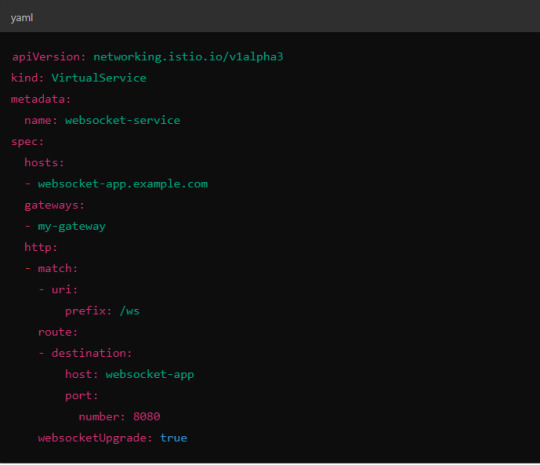
Here, websocketUpgrade: true explicitly allows WebSocket traffic and ensures that Istio won’t downgrade the WebSocket connection to HTTP.
2. Session Affinity (Sticky Sessions)
In WebSocket applications, sticky sessions or session affinity is often necessary to keep long-running WebSocket connections tied to the same backend pod. Without session affinity, WebSocket connections can be terminated if the load balancer routes the traffic to a different pod.
Implementing Session Affinity in Istio.
Session affinity is typically achieved by setting the sessionAffinity field to ClientIP at the Kubernetes service level.
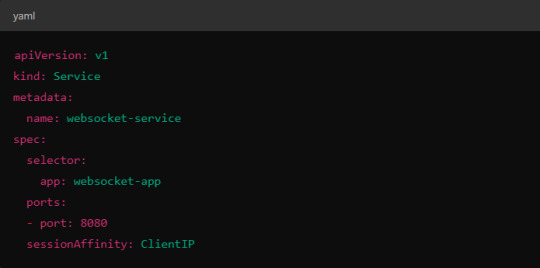
In Istio, you might also control affinity using headers. For example, Istio can route traffic based on headers by configuring a VirtualService to ensure connections stay on the same backend.
3. Load Balancing Strategy
Since WebSocket connections are long-lived, round-robin or random load balancing strategies can lead to unbalanced workloads across pods. To address this, you may consider using least connection or consistent hashing algorithms to ensure that existing connections are efficiently distributed.
Load Balancer Configuration in Istio.
Istio allows you to specify different load balancing strategies in the DestinationRule for your services. For WebSockets, the LEAST_CONN strategy may be more appropriate.
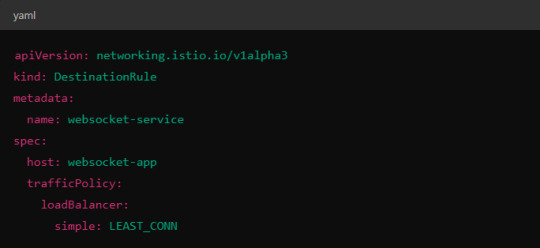
Alternatively, you could use consistent hashing for a more sticky routing based on connection properties like the user session ID.
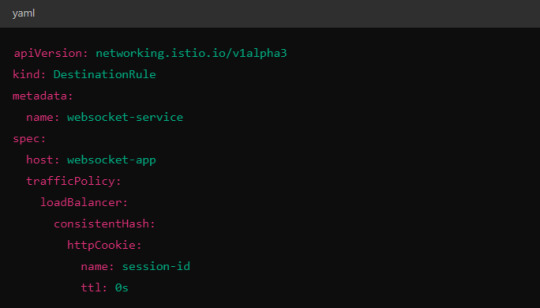
This configuration ensures that connections with the same session ID go to the same pod.
4. Scaling Considerations
WebSocket applications can handle a large number of concurrent connections, so you’ll need to ensure that your Kubernetes cluster can scale appropriately.
Horizontal Pod Autoscaler (HPA): Use an HPA to automatically scale your pods based on metrics like CPU, memory, or custom metrics such as open WebSocket connections.
Istio Autoscaler: You may also scale Istio itself to handle the increased load on the control plane as WebSocket connections increase.
5. Connection Timeouts and Keep-Alive
Ensure that both your WebSocket clients and the Istio proxy (Envoy) are configured for long-lived connections. Some settings that need attention:
Timeouts: In VirtualService, make sure there are no aggressive timeout settings that would prematurely close WebSocket connections.

Keep-Alive Settings: You can also adjust the keep-alive settings at the Envoy level if necessary. Envoy, the proxy used by Istio, supports long-lived WebSocket connections out-of-the-box, but custom keep-alive policies can be configured.
6. Ingress Gateway Configuration
If you're using an Istio Ingress Gateway, ensure that it is configured to handle WebSocket traffic. The gateway should allow for WebSocket connections on the relevant port.
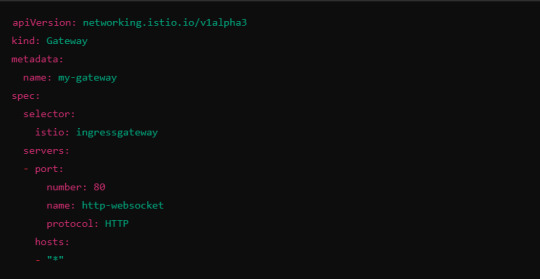
This configuration ensures that the Ingress Gateway can handle WebSocket upgrades and correctly route them to the backend service.
Summary of Key Steps
Enable WebSocket support in Istio’s VirtualService.
Use session affinity to tie WebSocket connections to the same backend pod.
Choose an appropriate load balancing strategy, such as least connection or consistent hashing.
Set timeouts and keep-alive policies to ensure long-lived WebSocket connections.
Configure the Ingress Gateway to handle WebSocket traffic.
By properly configuring Istio, Kubernetes, and your WebSocket service, you can efficiently load balance WebSocket connections in a microservices architecture.
#kubernetes#websockets#Load Balancing#devops#linux#coding#programming#Istio#virtualservices#Load Balancer#Kubernetes cluster#gateway#python#devlog#github#ansible
5 notes
·
View notes
Text
https://dd1.phncdn.com/videos/201801/24/151565932/480P_600K_151565932.mp4?ttl=1579204874&ri=2560000&rs=1600&clientip=140.186.174.27&hash=5b25b993be0b93257b435fd3649714ca
1 note
·
View note
Link
1 note
·
View note
Link
#ComeFunzionaL'ecommerce#ComeFunzionaSitoEcommerce#comefunzionaunecommerce#ComeFunzionaUnSitoEcommerce#E-commerceInItaliaComeFunziona#ecommerce#ecommercegratis#ecommercegratuito#ecommerceibrido#ecommerceinitalia#fidelizzazioneclienti#fidelizzazionedeiclienti#personalizzazionesconti#programmidifidelizzazione#SitoECommerceComeFunziona
0 notes
Text
Laravel - Get Client Ip Address
Laravel – Get Client Ip Address
Untuk mendapatkan ip address dari client di php sudah ada dengan $_SERVER dan parameter REMOTE_ADDR atau HTTP_X_FORWARDED_FOR. Di laravel kita dapat menggunakan request facade dan helper.
Example 1:
$clientIP = \Request::ip();
Example 2:
$clientIP = \Request::getClientIp(true);
Example 3:
$clientIP = request()->ip();
Semoga membantu.
View On WordPress
0 notes
Link
0 notes
Text
WordPress.com
http://bit.ly/2RrbZGP COMMIT_SHA = "36777b62207a095165069a64eaa831bdb8cb8cc8";var app = {"clientIp":"18.204.121.86","isDebug":false,"staticUrls":{"style.css":"\x2Fcalypso\x2Fstyle.css\x3Fv\x3Dfeab84126f","editor.css":"\x2
0 notes
Text
Medium CVE-2016-4793: Cakephp Cakephp
Medium CVE-2016-4793: Cakephp Cakephp
The clientIp function in CakePHP 3.2.4 and earlier allows remote attackers to spoof their IP via the CLIENT-IP HTTP header.The clientIp function in CakePHP 3.2.4 and earlier allows remote attackers to spoof their IP via the CLIENT-IP HTTP header. Source from..
View On WordPress
0 notes
Text
CakePHP2 | クライアントIPを取得する
CakePHP2 の関数を使って IP アドレスを調べる方法を、メモ!
$this->request->getClientIP(false);
↑こっちじゃなくて、
$this->request->clientIp(false);
↑こっちを使って。
「使わないで!」ってライブラリに書いてあるってすごいなー。笑。
別途、componentsも読み込まなくていいし、
clientIpの方が使い勝手も良さそうです。
それよりも、まずちゃんとcookbook読めよってことだ。
リクエストとレスポンスオブジェクト | CakePHP 2.x Cookbook
0 notes